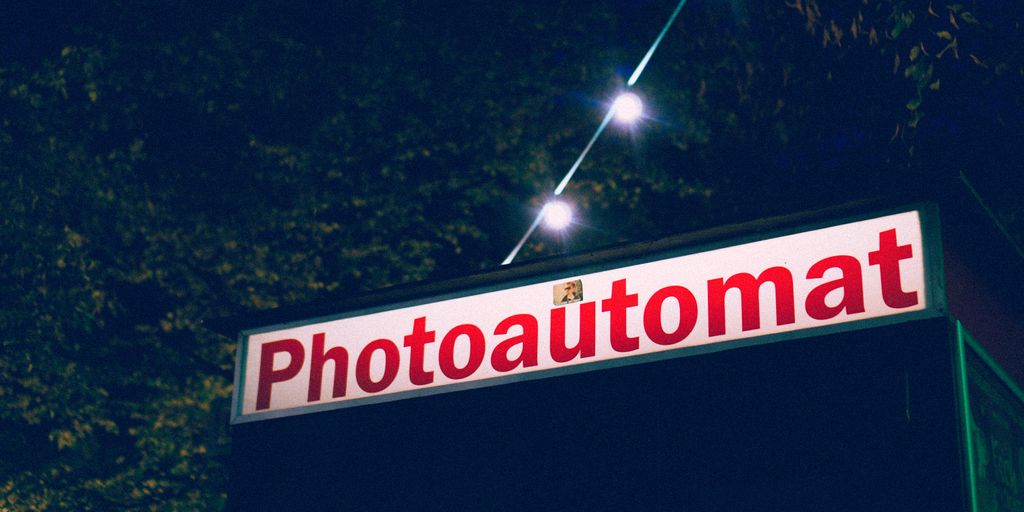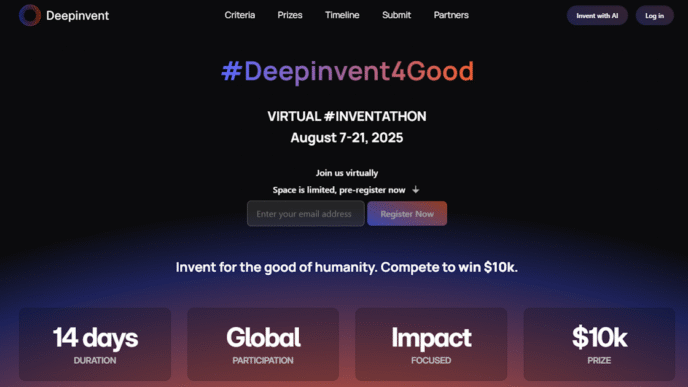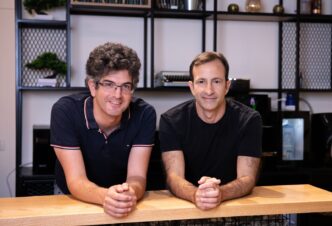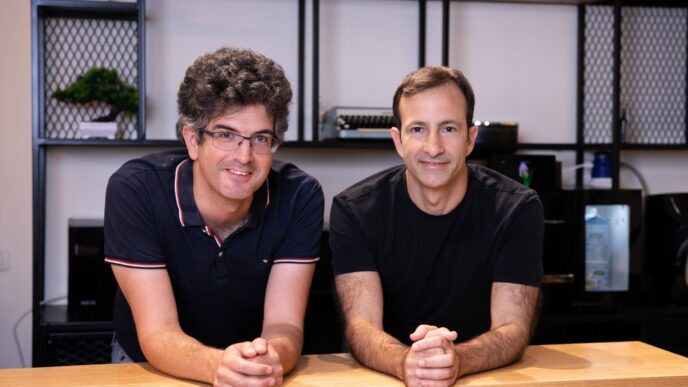Photosynthesis, the way plants and some tiny organisms turn sunlight into energy, works incredibly well even though things around it are kind of messy. A new study, mixing ideas from quantum physics, chemistry, and biology, might just explain why this process is so amazing. It all points to something called “photosynthesis quantum.”
Key Takeaways
- Photosynthesis is super efficient, almost perfect, at turning light into energy.
- Quantum mechanics helps explain how energy moves around in plants with hardly any loss.
- Scientists are looking at things like purple bacteria to figure out how this all works.
- The chlorophyll molecule is key; it does a special “quantum dance” with light.
- Understanding photosynthesis quantum could help us make better solar energy tech in the future.
Unraveling Photosynthesis Quantum Efficiency
The Near-Perfect Energy Transfer
Okay, so photosynthesis is kind of a big deal, right? I mean, it’s how plants make food, and it’s been around for ages. But what’s really wild is how efficient it is. We’re talking almost 100% energy transfer in some cases! That’s insane when you think about all the things that could go wrong. Like, energy could get lost as heat, or the whole process could just stall out. But no, nature’s got it figured out. It’s like a perfectly tuned machine, but, you know, made of plants.
Chlorophyll’s Role in Light Harvesting
So, chlorophyll is the star of the show here. It’s what makes plants green, and it’s also what captures sunlight. Think of it like tiny antennas, grabbing photons and getting all excited. But it’s not just about grabbing light; it’s about passing that energy along super efficiently. Chlorophyll molecules are arranged in these antenna complexes, and they work together to funnel the energy towards the reaction center. It’s like a bucket brigade, but with light energy. The chlorophyll molecule’s quantum dance is truly fascinating.
Bridging Energy Gaps with Fleeting States
Here’s where it gets a little mind-bending. See, the energy levels in these molecules aren’t always a perfect match. So, how does the energy get transferred without losing a bunch along the way? Well, it turns out that these molecules can exist in these weird, in-between states – fleeting quantum states that help bridge those energy gaps. It’s like having a temporary stepping stone that lets the energy hop from one molecule to another. These intermediate states are key to understanding photosynthesis quantum efficiency. It’s all about quantum mechanics, baby!
Quantum Mechanics in Photosynthesis
Okay, so photosynthesis is already pretty wild, right? Plants soak up sunlight and turn it into energy with crazy efficiency. But what if I told you that quantum mechanics – yeah, that mind-bending stuff – is actually at play here? It’s not just some side thing; it’s a key part of how plants pull off this amazing feat. Let’s get into it.
Superposition of Excited States
Imagine an electron being in multiple places at once. That’s superposition! In photosynthesis, when light hits a chlorophyll molecule, the electron gets excited. But instead of just jumping to one specific energy level, it exists in a superposition of states. This allows the plant to explore multiple energy pathways simultaneously, finding the most efficient route for energy transfer. It’s like the electron is trying out all the doors at the same time to find the fastest way through. This is a core concept in quantum biology.
Loss-Free Energy Transport Mechanisms
One of the biggest mysteries of photosynthesis is how energy moves through the light-harvesting complexes without getting lost as heat. Usually, when energy jumps from one molecule to another, some of it dissipates. But plants have figured out a way to minimize these losses. They use something called quantum coherence, where the excited states of different molecules are linked together. This creates a sort of "energy highway" that allows energy to travel quickly and efficiently to the reaction center, where it can be converted into chemical energy. It’s like a perfectly synchronized relay race where the baton never drops.
Charge Separation at the Quantum Level
Once the energy reaches the reaction center, the real magic happens: charge separation. This is where electrons are ripped away from their molecules and start flowing, creating an electrical current. But this process isn’t just a simple chemical reaction; it’s influenced by quantum effects. The electrons can tunnel through energy barriers, allowing them to move faster and more efficiently than they would classically. This quantum tunneling is crucial for the rapid and efficient charge separation that drives the entire photosynthetic process. It’s like the electrons are using a secret shortcut to get where they need to go.
Investigating Photosynthesis Quantum Secrets
Purple Bacteria as a Model System
So, how do scientists actually look at this quantum stuff happening inside plants? Well, one popular method is to use purple bacteria. Why purple bacteria? Because they’re relatively simple compared to plant cells, but they still perform photosynthesis with impressive efficiency. Studying these bacteria gives researchers a more manageable system to probe the quantum secrets at play. It’s like using a simpler engine to understand the basics before tackling a complex car engine.
Ultrafast Events in Photosynthetic Proteins
Photosynthesis happens fast. Like, really fast. We’re talking about events that occur on the scale of femtoseconds (that’s a quadrillionth of a second!). To study these ultrafast events, scientists use specialized techniques like ultrafast spectroscopy. This allows them to watch how energy moves through photosynthetic proteins in real-time. It’s like having a super-speed camera that can capture the quantum secret of energy transfer as it happens.
Focusing on Intermediate States
Think of photosynthesis as a series of steps. Light energy gets absorbed, then it gets passed around, and finally, it gets converted into chemical energy. But what happens between those steps? Those intermediate states are where a lot of the quantum magic happens. Scientists are now focusing on characterizing these fleeting states to understand how energy is transferred so efficiently. It’s like looking at the handoffs in a relay race – the key to winning isn’t just the runners, but how smoothly they pass the baton. Here are some things they look at:
- Energy levels of the molecules involved
- The speed of energy transfer between molecules
- The role of the protein environment in guiding energy flow
The Chlorophyll Molecule’s Quantum Dance
Electron Excitation and De-Excitation
Okay, so picture this: a chlorophyll molecule chilling, right? Then BAM, light hits it. This isn’t just any light; it’s light at just the right wavelength. When that happens, an electron in the chlorophyll gets all hyped up – we call it electron excitation. It jumps to a higher energy level. But what goes up must come down. The electron can’t stay excited forever. When it drops back down, it releases that energy. This is de-excitation. The way chlorophyll handles this excitation and de-excitation is key to photosynthesis.
Photon Emission and Protein Absorption
So, what happens to that energy when the electron chills out? Sometimes, it’s released as a photon – a tiny packet of light. Other times, it’s passed on to nearby proteins. These proteins then absorb that energy, and their electrons get excited too. It’s like a chain reaction, with energy bouncing around from molecule to molecule. The chlorophyll absorption spectrum is pretty important here, dictating which colors of light are best absorbed and used.
Energy Transformation at the Reaction Center
All this bouncing around eventually leads to the reaction center. Think of it as the main stage where the real magic happens. Here, the light energy that’s been collected is finally transformed into chemical energy. This is where the plant starts making sugars, which it uses for food. It’s a super efficient process, and scientists are still trying to figure out exactly how nature pulls it off. Understanding solar energy transformation is a big deal for renewable energy research. The whole process is like a carefully choreographed dance, with each molecule playing its part in perfect harmony. It’s pretty amazing when you think about it.
Implications for Renewable Energy
Engineering Artificial Photosynthesis
Okay, so plants are amazing at turning sunlight into energy, right? What if we could copy that? That’s the idea behind artificial photosynthesis. Scientists are trying to build systems that mimic what plants do, but with the goal of making clean fuels like hydrogen or methanol. It’s a tough challenge, but the potential payoff is huge. Imagine a world where we can create fuel directly from sunlight and water. That’d be pretty cool.
Replicating Nature’s Efficiency
Plants have been doing this photosynthesis thing for millions of years, so they’ve gotten pretty good at it. The efficiency with which they capture and convert solar energy is something we can only dream of achieving with our current technology. Understanding the quantum tricks they use could give us the blueprints for much better solar energy devices. We’re talking about potentially revolutionizing how we power our world. It’s not just about copying what plants do, but understanding why it works so well.
Guiding Future Solar Energy Innovations
This research isn’t just about making artificial plants. It’s also about improving existing solar energy tech. By learning how plants minimize energy loss during photosynthesis, we can design solar panels that are more efficient. Think about it: even a small increase in efficiency can make a big difference when you’re talking about powering entire cities. It’s like fine-tuning an engine to get more miles per gallon – except in this case, the engine is a solar panel, and the fuel is sunlight. This study may guide future innovations in capturing the sun’s power.
The Interdisciplinary Approach to Photosynthesis Quantum
Photosynthesis is super complex, and to really get what’s going on, you can’t just look at it from one angle. It’s like trying to understand a car engine by only looking at the spark plugs. You need the whole picture! That’s where an interdisciplinary approach comes in, bringing together different fields to crack the code.
Integrating Quantum Physics and Biology
Okay, so picture this: you’ve got the super weird world of quantum physics meeting the messy, organic world of biology. Sounds like a recipe for confusion, right? But it’s actually where the magic happens. Quantum mechanics explains how energy moves at the tiniest scales, and biology tells us how these processes are used in living things. It’s like figuring out how a computer chip works (quantum) and then understanding how that chip runs a program (biology). We need both to understand photosynthesis quantum efficiency.
Chemistry’s Role in Energy Conversion
Chemistry is the unsung hero here. It’s all about the molecules, how they interact, and how they transform energy. In photosynthesis, chemistry explains how chlorophyll grabs sunlight and turns it into chemical energy. Think of it like this: chemistry is the chef that takes raw ingredients (sunlight, water, CO2) and cooks up a delicious meal (sugar) for the plant. Understanding the chemical reactions is key to improving solar energy tech.
Unveiling Life’s Most Efficient Processes
Photosynthesis is crazy efficient. Plants are basically solar panels that can feed themselves! By combining physics, biology, and chemistry, we’re starting to figure out how they do it. It’s like reverse-engineering nature’s best invention. If we can understand how plants pull this off, we could create new technologies that are way more efficient than what we have now. It’s not just about understanding plants; it’s about artificial photosynthesis and changing the future of energy.
Understanding Nature’s Light Harvester
The Mystery of Chlorophyll’s Power
Okay, so chlorophyll. We all know it makes plants green, but it’s way more than just a pigment. It’s the engine that drives photosynthesis, and scientists are still trying to figure out exactly how it manages to be so darn efficient. It’s like nature’s little secret, and we’re just trying to crack the code. Conventional wisdom says that near-perfect efficiency is only possible under stringent conditions, but photosynthesis occurs efficiently without needing such extraordinary circumstances. How is this possible? Understanding the intricate interplay of quantum states in chlorophyll could help scientists engineer similarly efficient electricity generation or photochemistry methods.
Analyzing the Chlorophyll Absorption Spectrum
Chlorophyll doesn’t absorb all colors of light equally. It’s got its favorites, and that’s why plants look green – they’re reflecting the green light that isn’t being absorbed. Researchers examined both the low-energy Q region (yellow to red range) and the high-energy B region (blue range) of the chlorophyll absorption spectrum. Focusing on two sections of the chlorophyll absorption spectrum, the researchers examined both the low-energy Q region (yellow to red range). The study specifically looked at the role of antenna proteins in energy transfer. In purple bacteria, the primary antenna protein, known as LH2 (light-harvesting complex 2), collects and funnels energy towards the photosynthetic reaction center. The researchers performed experiments on these LH2 proteins and discovered that rapid interprotein energy transfer enhances both efficiency and distance over which energy can be transported.
Key Intermediary States in Energy Transfer
Photosynthesis isn’t a one-step process; it involves a series of intermediate states that help shuttle energy from one place to another. One key intermediary state (Qx) exists fleetingly on a timescale under 30 femtoseconds, the team concludes that its brief presence is essential to bridging the energy between the B and Q regions. The overall process unfolds so smoothly that it offers an almost loss-free pathway for energy transport. It’s like a carefully choreographed dance, where each step is crucial for getting the energy where it needs to go. By focusing on the intermediate steps of photosynthesis, researchers hoped to quantify and understand why this process was so lossless in terms of solar energy.
Wrapping It Up: The Quantum Future
So, what does all this quantum talk mean for us? Well, understanding how plants pull off their amazing energy tricks at such a tiny level could really change things. We’re talking about possibly making our own super-efficient energy systems, maybe even building artificial leaves that can grab sunlight just like real ones. It’s pretty wild to think about, but figuring out these quantum secrets in photosynthesis might just lead us to some cool new ways to power our world, all while being kinder to the planet. The future of energy could be a lot greener, thanks to these tiny, quantum-level discoveries.
Frequently Asked Questions
What is photosynthesis?
Photosynthesis is how plants and some tiny living things turn sunlight into energy. It’s super important for life on Earth because it makes the food and oxygen we need.
How does photosynthesis use light so well?
It’s like magic! When a plant’s green stuff, called chlorophyll, soaks up sunlight, it gets excited. This excitement then moves around with almost no energy lost, helping the plant make sugar. Scientists are still trying to figure out all the tiny details of how it works so well.
What does “quantum mechanics” have to do with photosynthesis?
Quantum mechanics is a fancy way to describe how really tiny things, like parts of atoms, act. In photosynthesis, these tiny parts of energy move in special ways that help the plant catch and use sunlight super efficiently.
Why do scientists study purple bacteria?
Scientists study special bacteria, like purple bacteria, because they are really good at photosynthesis. By watching these tiny helpers, scientists can learn more about how plants turn light into energy without wasting much.
How can learning about photosynthesis help us with energy?
Scientists want to learn nature’s secrets to make better solar panels and other clean energy tech. If we can copy how plants use sunlight, we could make much more efficient ways to power our homes and cars.
Who studies photosynthesis at this deep level?
It’s like a team effort! Scientists who study tiny particles (quantum physics), how living things work (biology), and how stuff changes (chemistry) all work together. They combine their smarts to understand how life’s most amazing energy trick happens.













